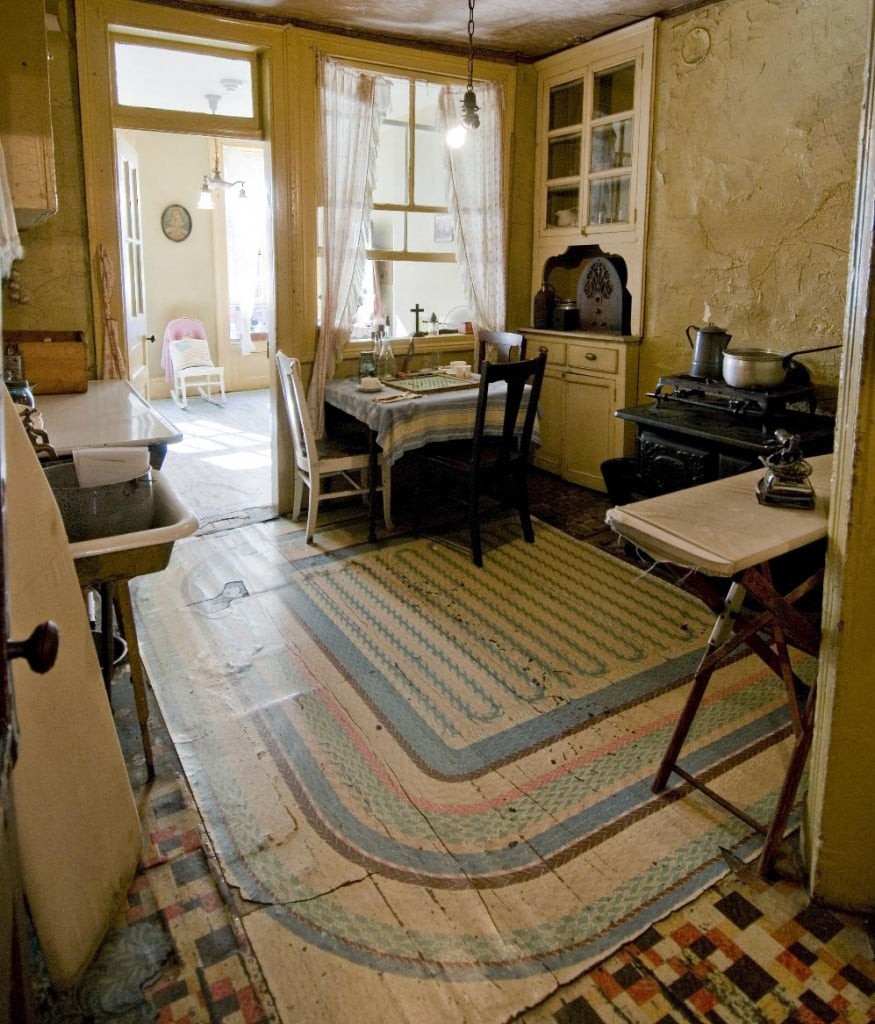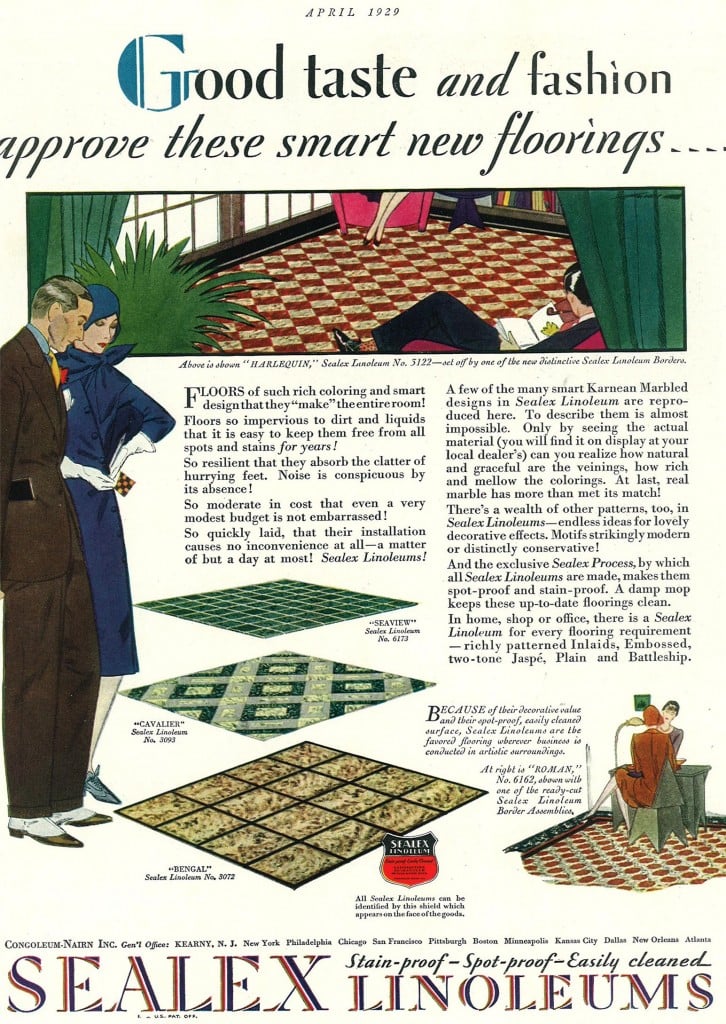This 100-year-old linoleum was cleaned and removed from an unused apartment in 2013 so that conservators could access the floorboards and thus the ceiling of the apartment below. Conservators cleaned the 9×12 linoleum carpet with a HEPA vacuum and soot sponges, and then they applied tissue paper to protect it when rolling it up. It was then stored in a large tube with protective foam for the next 10 years.
Our Curatorial team was worried that it would crack when it was unrolled, so they used hairdryers to gently heat the linoleum to make it more flexible and prevent cracks when it is unrolled. Once the linoleum was unrolled, our team used damp sponges to wipe away the tissue paper and reveal the patterned surface.



